
Introduction
When choosing a mechanical keyboard you are sometimes offered multiple different versions differing by a choice of included key switches. For example, the popular Keychron K8 Wireless is available with either Gateron Red, Blue or Brown switches. Each key switch type has a slightly different feel when typing or gaming. Some feel smooth and are quiet, others are more tactile and noisy (some very noisy!), and others offering a middle ground. Some keyboards even allow you to swap out the key switches, called a hot-swappable keyboard. For example, I use the Glorious GMMK Tenkeyless keyboard that includes the Gateron Brown key switches as standard; however, the keyboard has been designed to allow the key switches to be easily removed and swapped out. This allows you to upgrade the feel of your keyboard as your needs change, or you simply want something different without the expense of a new keyboard. A set of key switches is also relatively inexpensive (USD 30 to 40), which can effectively give you a completely different keyboard experience.
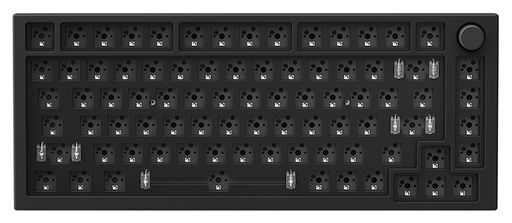
Anatomy of a Mechanical Key Switch
A mechanical key switch is made from only 5 parts. They are made from high precision plastic polymer with a gold-plated internal switch to ensure minimal wear and achieve a long lifespan. Many switches are rated to last between 50 million and 100 million key presses.
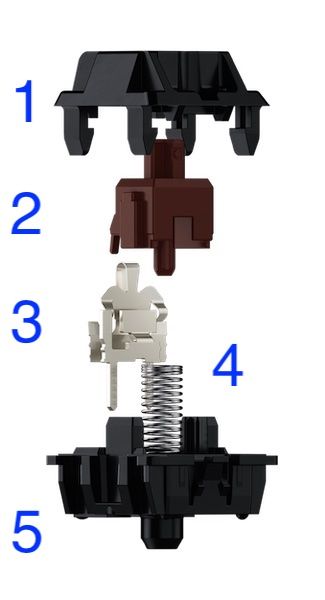
1) Upper Housing - The upper housing is made from a plastic polymer to a very high level of tolerance, guiding the stem to create a smooth vertical movement with negligible wobble. You will notice that with very cheap keyboards, the keys feel very unstable when typing.
2) Stem - The stem is made of plastic polymer that creates the vertical movement and the key feel. For a tactile or clicky key switch, the stem is responsible for the tactile or clicky characteristics due to its unique shape and design.
3) Crosspoint Contact - Usually gold-plated, the crosspoint contact is the heart of the key switch. Using gold ensures there is no corrosion throughout the life of the switch.
4) Coil Spring - The coil spring provides the resistance you feel when you depress the key. Each switch type uses a different rated spring. You can see the effect of the spring when looking at the activation force value for each switch.
5) Base Housing - Like the upper housing, the base housing is made from a plastic polymer. The base housing both holds together the switches internal mechanism and also forms the mount with which it connects to the keyboard base.
History of Gateron
Ever since Cherry's patents on the MX switches expired in 2014, the market has been flooded with inexpensive clones of their key switches. Many of these are of poor quality; however, a few companies such as Gateron and Kailh have grown to offer switches that match and in many cases better the Cherry equivalents.
Gateron is a Chinese manufacturing company that is located in Guangdong and has been manufacturing electrical key switches since 2000. They specialise in the development and production of electronic and electrical switches, sensors, and plastic hardware parts.
Gateron Key Switches
Most clone key switches are named and coloured according to their corresponding Cherry MX counterpart. Whilst they are designed from the original Cherry patents and imitate the Cherry MX switch feel, they are not always identical to their Cherry counterparts.
Gateron key switches are available with either solid or clear cases. The clear cases are popular if you use an RGB keyboard where the LED lighting shines through the key switches due to the RGB lights being mounted underneath the key switches. A solid key switch blocks a lot of the light.
The quality of Gateron key switches is very high, and have a typical minimum of 50 million switch activations. I have not had a Gateron switch to fail, and I have been using Gateron switches for several years.
Gateron Browns are one of my favourite tactile key switches, offering a more subtle tactile bump than the Cherry MX Browns. I find a Brown switch offers a nice balance between a smooth linear switch and a clicky switch. I find that Gateron switches use smoother plastic stems than most other switches, resulting in a smoother downstroke feel, similar to a classic Cherry MX switch.
Key Switch Terminology
There are a several terms used when comparing the specifications of a mechanical key switch.
- Activation Force - measured in grams (g) and represents the force that needs to be applied to activate the switch. A lower number gives the keyboard a lighter feel; however, you may find that these switches are activated too easily. The higher the number the harder the keys will feel. A typist prefers a balance as too high an activation force can result in finger fatigue over time.
- Activation - measured in mm and represents the distance the key switch needs to travel before it is activated. Too little can result in keys being incorrectly activated if you are a fast touch typist and too high can make typing speeds slower as you need to depress each key further. Note that there is always a tolerance of around 0.6mm in these values.
- Travel - measured in mm and represents the total travel of the key switch. Most mechanical key switches have a travel of around 4mm, with some slim keyboards having reduced travel. Note that there is always a tolerance of around 0.6mm in these values.
Key Switches Samples
Before we jump into the various Gateron switches you may be thinking that it would be quite hard to decide upon your preferred switch with just a subjective set of technical data. You are correct, which is why most people opt for the Gateron Browns that represent a middle ground.
To help you decide, I recommend getting an inexpensive key switch sample set that includes several key switches to test. There is a number available on eBay, but my favourite is the Glorious Switch Sample Pack which contains 14 of the most popular switches from Gateron and Kailh.
- Gateron Switches - Black, Blue, Brown, Clear, Green, and Red
- Kailh Switches - Box Black, Box Brown, Box Red, Box White, Speed Bronze, Speed Copper, Speed Silver, and Pro Purple
- Glorious O-Rings - both thin and thick are included
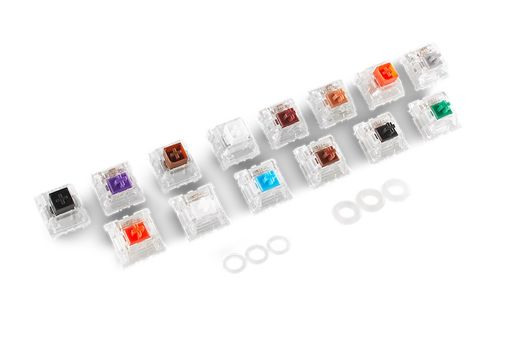
The included O-Rings can be added to key switches to dampen the feel and sound when the switch bottoms out when fully depressed. These can be popular if you are on conference calls or streaming, and you want to reduce the ambient noise, but still retain the feel of the key switch.
There are 3 types of mechanical key switches, linear, tactile or clicky.
Gateron Linear Key Switches
Linear key switches are popular for gaming, where the smooth travel of the keys minimises any finger fatigue due to fast and intensive key presses.
| Key Switch | Activation Force | Activation | Travel |
|---|---|---|---|
| Gateron Clear | 35g | 2mm | 4mm |
| Gateron Red | 45g | 2mm | 4mm |
| Gateron Yellow | 50g | 2mm | 4mm |
| Gateron Black | 60g | 2mm | 4mm |
Gateron Clear
The Clear key switch has a very light and soft feel, resulting in low finger fatigue for typing or gaming. However, you may feel that these are too light for typing.
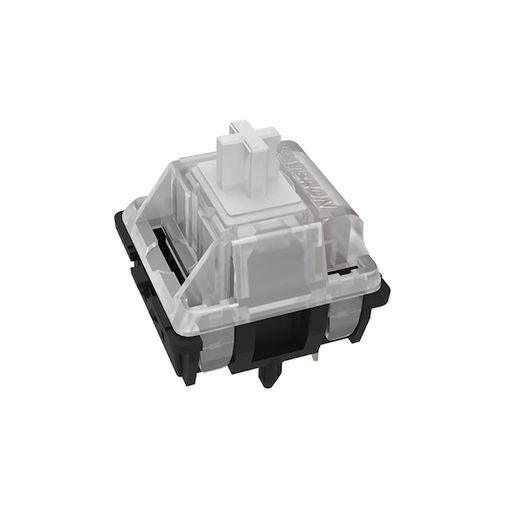
- Type - Linear
- Activation Force - 35g
- Activation - 2mm
- Travel - 4mm
- Sound Profile - Silent
Gateron Red
The Red key switch is the most popular switch for gaming. It offers a very smooth feel. Typists may miss a tactile bump to achieve fast touch typing speeds.

- Type - Linear
- Activation Force - 45g
- Activation - 2mm
- Travel - 4mm
- Sound Profile - Silent
Gateron Yellow
Also a slightly heavier version of the red. The Yellows are preferred over the Black or Reds due to their very smooth feel; however, they are hard to find. They would be my preferred linear key switch.

- Type - Linear
- Activation Force - 50g
- Activation - 2mm
- Travel - 4mm
- Sound Profile - Silent
Gateron Black
A slightly heavier version of the red.

- Type - Linear
- Activation Force - 60g
- Activation - 2mm
- Travel - 4mm
- Sound Profile - Silent
Gateron Tactile Key Switches
Tactile key switches are popular for typing as they offer a noticeable tactile bump when pressed and have little noise. The tactile bump allows typists to achieve higher typing speeds as they are aware of the point the switch activates and can therefore remove their finger and move to the next key.
| Key Switch | Activation Force | Activation | Travel |
|---|---|---|---|
| Gateron Brown | 55g | 2mm | 4mm |
Gateron Brown
The Brown key switches are the most popular and can be regarded as a middle ground. The Gateron Brown has a slightly less tactile feel than the Cherry MX or Kailh Brown switches. Some prefer the less tactile feel, but it can sometimes be harder to differentiate between them and the smoother linear switch.
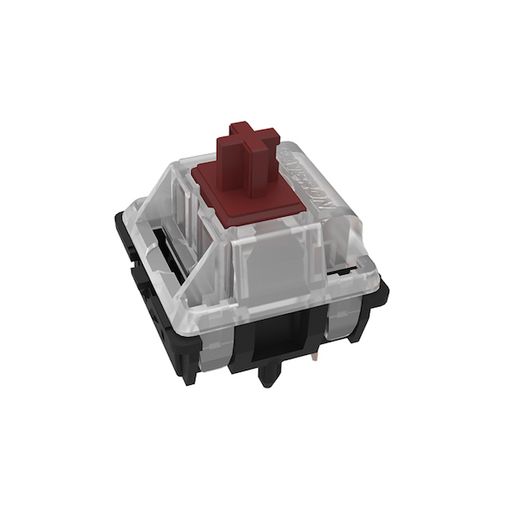
- Type - Tactile
- Activation Force - 55g
- Activation - 2mm
- Travel - 4mm
- Sound Profile - Medium
Gateron Clicky Key Switches
Traditional clicky key switches are either loved or hated. Typists love the feel and tactile click that brings a classic typewriter feel to their typing. However, it seems everybody else hates the loud noise they generate, especially in open environments. I highly recommend you try them out first. I can honestly say that I would love to swap out my Gateron Browns for Blues, but I typically work from home in an open area and it would drive the rest of the family insane.
| Key Switch | Activation Force | Activation | Travel |
|---|---|---|---|
| Gateron Blue | 55g | 2mm | 4mm |
| Gateron Green | 80g | 2mm | 4mm |
Gateron Blue
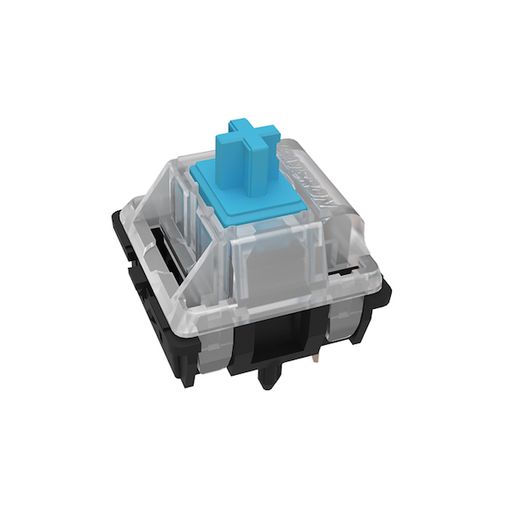
- Type - Clicky
- Activation Force - 55g
- Activation - 2mm
- Travel - 4mm
- Sound Profile - High
Blue key switches are the most popular clicky switches. They have a pretty loud click that is loved by typists.
Gateron Green

- Type - Clicky
- Activation Force - 80g
- Activation - 2mm
- Travel - 4mm
- Sound Profile - High
Green key switches are very heavy and not recommended for fast typists who would get finger fatigue due to the high force required to activate the switch.
How to Choose?
There are several factors to consider when looking to choose the type of mechanical key switch for your next keyboard.
Work (or Play) Environment
When considering the type of key switch you need to be aware of the environment where you will be doing the most typing or gaming. If it is in a home office, bedroom or gaming room, you may be less worried about a noisy keyboard. If in an open environment then consider the noise of clicky switches and the people around you.
Key Feel
The choice of the key switch will also depend on how you like the keyboard to feel. Moving to a mechanical key switch opens up a wide range of different styles, from a smooth feeling keystroke, one that has an obvious tactile bump or a defined noisy click.
Usage
Another deciding factor would be your specific usage.
- Gaming - If you are predominantly using the keyboard for gaming, I would recommend a linear key switch. They offer a smooth keystroke and are silent. Most gaming keyboards include a Red key switch.
- Typing - If you will be mainly typing then either a tactile or clicky keyboard is recommended. The choice will come from the level of noise you can accept and the specific feel. The popular DAS Keyboards offer a choice of either Cherry MX Brown or Blue.
- General Purpose - The reason the tactile Gateron Brown is the most popular key switch is that it offers a nice middle ground between a smooth linear switch and a noisy clicky one. I am a longtime fan of tactile switches as they can be using for both gaming and typing, and I find that having a switch that caters well to both is preferred.
Conclusion
Being able to choose between key switches is a great advantage of choosing a mechanical keyboard. Gateron offers some of the best quality and best value key switches and is highly recommended if you are choosing a new mechanical keyboard or if you are looking to upgrade your existing keyboard.
